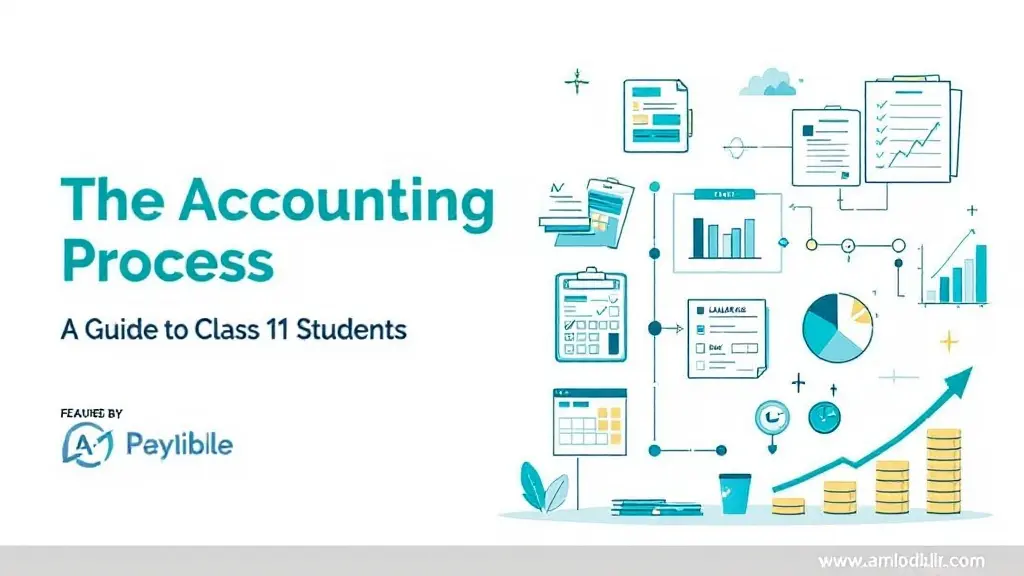Basic Accounting Definitions: A Beginner’s Guide to Mastering the Language of Finance
Table of Contents
Most Read
[fusion_dropcap class="fusion-content-tb-dropcap"]A[/fusion_dropcap]ccounting is often called the language of business—and like any language, it starts with understanding the basics. Whether you’re a student, entrepreneur, or just someone trying to make sense of financial terms, knowing the basic accounting definitions is essential.
In this article, we’ll break down the most commonly used accounting terms into simple, everyday language. No jargon, no complicated formulas—just clear explanations and practical examples to help you understand the core of accounting. Let’s get started.
📌 Why Learn Basic Accounting Terms?
Before we dive into the definitions, let’s understand why this knowledge matters.
Whether you’re:
- Running a startup
- Managing your personal budget
- Planning a career in finance
- Or working with an accountant
…understanding accounting lingo helps you make smarter decisions, spot financial red flags, and communicate effectively.
Now, let’s explore the key terms every beginner should know.
🧾 1. Accounting
Definition:
Accounting is the systematic process of recording, classifying, summarizing, and interpreting financial transactions of a business.
In simple words:
It’s how a business keeps track of money—what comes in, what goes out, and how it all adds up.
Example:
Just like maintaining a diary of your daily expenses, businesses maintain books to record every financial transaction.
💰 2. Assets
Definition:
Assets are everything a business owns that has value—whether it’s cash, equipment, or inventory.
In simple words:
Assets are valuable things that belong to a person or company.
Example:
Cash, land, machinery, computers, buildings, and vehicles.
SEO Tip: Keywords like types of assets, current and fixed assets, and asset accounting can boost visibility.
🧾 3. Liabilities
Definition:
Liabilities are the debts or obligations a company owes to outsiders.
In simple words:
It’s the money a business owes to others.
Example:
Loans, outstanding bills, or unpaid salaries.
⚖️ 4. Equity (Owner’s Equity)
Definition:
Equity is the owner’s claim on the business after all liabilities are paid off.
In simple words:
If you sold all your assets and paid all your debts, what’s left is your equity.
Formula:
Equity = Assets – Liabilities
📊 5. Balance Sheet
Definition:
A financial statement that shows a company’s assets, liabilities, and equity at a specific point in time.
In simple words:
It’s a snapshot of a company’s financial position.
Example:
Think of it as a photo of your bank account, loans, and valuables—taken on a particular date.
💳 6. Revenue (Income)
Definition:
Revenue is the total money a business earns from its normal operations, like sales or services.
In simple words:
It’s the money coming in.
Example:
A bakery’s revenue includes all the money it makes from selling cakes and pastries.
💸 7. Expenses
Definition:
Expenses are the costs a business incurs to earn revenue.
In simple words:
It’s the money going out.
Example:
Rent, salaries, electricity, and advertising costs.
🔄 8. Profit (Net Income)
Definition:
Profit is what remains after subtracting expenses from revenue.
Formula:
Profit = Revenue – Expenses
In simple words:
If your earnings are more than your spending, the difference is your profit.
📝 9. Journal
Definition:
A journal is the first place where transactions are recorded in chronological order.
In simple words:
It’s a day-by-day diary of financial activities.
Example:
If you buy office chairs, the transaction is recorded in the journal first.
📚 10. Ledger
Definition:
A ledger is a book where journal entries are categorized into individual accounts.
In simple words:
It’s where similar transactions are grouped together—like all cash-related transactions in one place.
Example:
Your cash account ledger will show all inflows and outflows of cash.
🔁 11. Double-Entry System
Definition:
A system of accounting where every transaction affects two accounts: one debit and one credit.
In simple words:
For every action, there is a reaction—every financial activity is recorded twice.
Example:
If you buy a laptop for ₹50,000 in cash, you record a debit in the Laptop account and a credit in the Cash account.
🧮 12. Debits and Credits
Definition:
These are the two sides of every transaction in double-entry accounting.
In simple words:
- Debit increases assets or expenses, and decreases liabilities or income.
- Credit increases income or liabilities, and decreases assets or expenses.
Mnemonic tip:
DEALER
- Dividends
- Expenses
- Assets → Increase with Debit
- Liabilities
- Equity
- Revenue → Increase with Credit
🏦 13. Cash Flow
Definition:
Cash flow is the movement of money in and out of a business.
In simple words:
It tells you whether a business has enough cash to pay its bills.
Example:
Positive cash flow = more cash comes in than goes out.
📉 14. Depreciation
Definition:
Depreciation is the reduction in value of an asset over time due to wear and tear.
In simple words:
It’s how you spread the cost of an asset over its useful life.
Example:
A computer worth ₹60,000 used for 3 years might depreciate ₹20,000 per year.
🧾 15. Accounts Payable (AP)
Definition:
The amount a company owes to suppliers for goods or services received on credit.
In simple words:
Unpaid bills.
Example:
You buy ₹10,000 worth of stationery on credit. That becomes part of your accounts payable.
💵 16. Accounts Receivable (AR)
Definition:
Money owed to a business by customers who bought goods or services on credit.
In simple words:
Pending payments from customers.
Example:
If you provided consulting services worth ₹15,000 and haven’t been paid yet, that amount is your receivable.
📅 17. Accrual Accounting
Definition:
A method of accounting where transactions are recorded when they are incurred—not when the money is exchanged.
In simple words:
You record income when it’s earned and expenses when they happen, even if cash hasn’t moved yet.
📊 18. Trial Balance
Definition:
A statement that lists all account balances to check whether debits equal credits.
In simple words:
It’s a quick check to make sure your books are balanced.
📑 19. General Entry
Definition:
A formal record of a transaction in the journal.
In simple words:
The exact format in which every transaction is recorded.
Example:
Debit: Office Supplies ₹5,000
Credit: Cash ₹5,000
🧾 20. Capital
Definition:
The amount invested by the owner in the business.
In simple words:
Owner’s money used to start or run the business.
Example:
If you put ₹1,00,000 into your business, that’s your capital.
🎯 Conclusion: Build a Strong Accounting Foundation
Mastering these basic accounting definitions gives you the tools to understand how money moves in any business. These terms are the foundation upon which all advanced accounting concepts are built.
Whether you’re a student, freelancer, small business owner, or aspiring accountant, take time to revisit these definitions regularly. They’ll serve as your guide in making informed financial decisions.
🔍 SEO Keywords You Can Target:
- basic accounting definitions
- accounting terms for beginners
- what is asset in accounting
- accounting terminology explained
- beginner’s guide to accounting
📌 Final Tip
Bookmark this post or download a printable version to keep these terms handy. As your accounting journey progresses, you’ll find yourself referring to them often.
If you’re looking for personalized help with accounting, GST, or tax services—Accounting24.in is here to guide you every step of the way.









